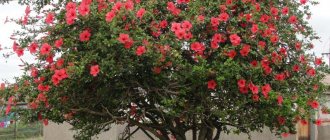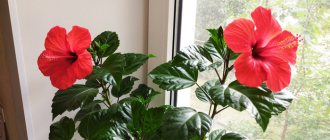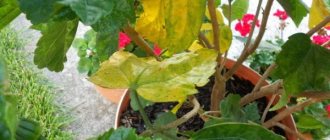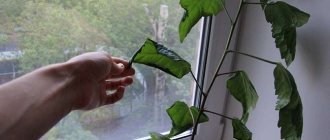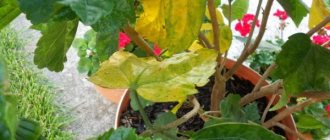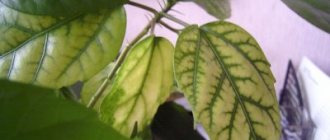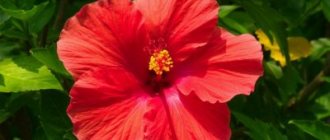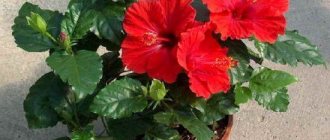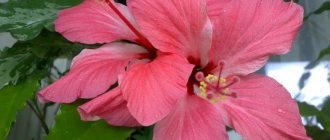Hibiscus are common garden flowers. They are distinguished by the splendor of their shapes, colors, and aroma. In total, there are up to 300 species of them, differing in shape, flowering time, and care requirements.
In this article we will look at the rules for planting and caring for garden hibiscus in the open ground, which varieties are most used in landscape designs and much other useful information.
Hibiscus: origin and distribution
Researchers have discovered beautiful, colorful flowers in the tropical forests of Asia for the first time. In the wild, hibiscus grows as shrubs reaching three meters in height. The Chinese rose is also widespread in South America, especially in Argentina, where these flowers are usually grown in almost every home.
You may be interested in: How to remove snakes
Hibiscus was brought to Europe only in the 18th century, where it became fashionable and was grown in greenhouses and homes. Despite the fact that many superstitions are attached to it, its care and colorful flowering evoke only positive reviews from gardeners. Why is hibiscus the flower of death? The answer to this question will be discussed below.
How did the hibiscus flower become a houseplant?
For the first time people began to pay attention to the exotic flower in the 18th century. This happened in Hawaii, and, of course, it was not the Hawaiians themselves who paid attention to the plant, but the ubiquitous Europeans. They brought the plant to the Old World, and they began to grow it in botanical gardens and greenhouses. In America, it became popular as an ornamental plant only at the beginning of the 20th century.
Hibiscus tree
Today, hibiscus is considered almost a classic houseplant, at least in our country. In our country it is popular as a houseplant, while in Argentina or Malaysia it is grown outside in the garden, because the climatic conditions of our country will not allow this, because it is very cold.
Interesting fact. The famous bright red hibiscus tea, which has a sweet and sour taste, is also made from one of the varieties of hibiscus - Sudanese rose.
Attitude to flowers in different countries
In Asian, American and European countries, Chinese roses are treated differently:
- in Asian countries (Malaysia, Indonesia, the islands of Fiji and Haiti) the plant is considered a cult plant; holidays and festivals-processions are organized in honor of hibiscus;
- in Malaysia, hibiscus blossoms are called a harbinger of imminent wealth, and for unmarried Chinese girls it promises an imminent wedding and love;
You may be interested in: How to remove snakes
- in Brazil and Argentina, the blooming of the Chinese rose foretells the birth of a healthy baby;
- its Chinese name is indicated by a special hieroglyph interpreted as the word “exquisite”;
- in European culture, on the contrary, there are many signs and superstitions associated with hibiscus.
Botanical description
According to the scientific classification, hibiscus belongs to the evergreen shrub plants of the Malvaceae family, which can be annual or perennial.
The plant has petiolate, incised leaves. The fruits are formed into a capsule, which breaks into 5 parts; inside it there are pubescent or smooth seeds in large quantities. The brightest and most beautiful part of the plant is the hibiscus flower (photos of various colors are shown below).
For growing at home in European countries, a greenhouse type of hibiscus called the Chinese rose (lat. Hibiscus rosa-sinensis) is used. The Malay Archipelago is considered its homeland and has flowers of different colors and shapes. Over the past 20 years, geneticists have been able to develop many new varieties of Chinese roses, which flower growers rightfully consider one of the main decorations of many home flower beds.
You may be interested in: How to grow thuja from cuttings
Reproduction methods
Bush large-flowered cultivars grow strongly over time, and the corollas become smaller. This is a signal that it is time to propagate garden hibiscus by division.
In the spring, as soon as the shoots hatch, the bush is dug up. The rhizome is cut into parts, each of which must contain at least one growth point, and planted in a permanent place.
You don’t have to take the entire bush out of the ground, but carefully separate a part with a shovel and immediately move it to another area.
Herbaceous hibiscus propagates by green cuttings. But this is a less reliable method, and you will also have to sacrifice the flowering of one of the shoots.
Annual species are propagated by seeds. In the middle zone - through seedlings; in the south it is possible to sow in the ground after the soil has warmed up.
Syrian hibiscus is propagated by:
- Species plants, many non-double varieties - by seeds. They can be planted in the ground before winter, and friendly shoots will appear in the spring. When they grow up, the seedlings are transferred to the school or immediately to a permanent place.
- Semi-lignified summer cuttings, or branches remaining after pruning, are rooted in water, a light substrate, or planted in slightly shaded beds protected from the wind.
- Well-placed lower branches are dug in.
- Air layering is done.
Varieties and hybrids
Hibiscus has a wide variety of species (about 300), however, its 2 main species are common in Russia and the CIS countries:
- Syrian - grows in the southeast of Transcaucasia, where the subtropical zone is located;
- trifoliate, or northern - common in countries with a continental climate (in the southern regions of Ukraine, Western Europe, regions of the Far East and Kazakhstan).
The most beautiful and beautiful species is the swamp hibiscus, the flower (photo below) of which can reach 12 cm, has a bright purple color, but prefers to grow in a tropical climate.
Hybrid varieties of hibiscus, bred back in USSR times in Tashkent, are herbaceous plants. One of them - red hibiscus - has the largest flowers, reaching a diameter of 27 cm, and original “maple” leaves of a reddish hue. In the southern regions of Russia they are even planted in open ground, but it is preferable to grow the plant at home in a greenhouse.
Peculiarities
Hibiscus are ornamental plants from the Malvaceae family. They are cultivated for their flowers, which are distinguished by their exceptional beauty and variety of shapes; thanks to these qualities, the plant is especially popular among gardeners. The first mentions of hibiscus appeared in Ancient Greece, where it was known under the name “mallow”; nowadays it is more often called “Chinese rose”. The approximate birthplace of hibiscus is Malaysia, but there are theories according to which the plant originated in China, India or Korea.
In the natural environment, hibiscus is represented in most cases as a shrubby form; their height sometimes reaches 3 meters. Hibiscus stems are gray in color. The plant has a dense green crown and many large flowers with translucent petals, the shades of which can be very diverse - from single-use to rich crimson. There are even red varieties, and more recently, “Florida” hibiscus have been developed, which are characterized by bright blue flowers.
Unfortunately, the life of hibiscus flowers is very short - only a day, however, every morning the miracle happens again, when more and more flowers are formed from the buds.
By the number of varieties, hibiscus belongs to the most numerous group of plants in the world: sabdariffa, sudanese, Chinese rose, schizopetalus, hybrid, trifoliate, red-leaved, royal - just to name a few. Flowers can be deciduous and evergreen, perennial and annual, trees, and shrubs. According to the nature of their growth, herbaceous, tree-like and varietal hibiscus are distinguished.
Tree plants include, for example, the Syrian rose, which is grown in the form of a small tree. This plant can also be branched, low-growing, or can look like a single-stemmed tree, which under comfortable conditions grows up to 5-6 m. Herbaceous hibiscus is a low-growing bush with erect, very strong shoots, large leaf plates and large flowers, their size in some cases reaches 30-40 cm.
Herbaceous plants can be annuals or delight with their bright flowering for several seasons. Annual forms die off every autumn, but in the spring, with the onset of warmth, new shoots appear from the roots and lower buds. Perennial hibiscus are much more attractive, they are distinguished by their terry and multi-layered nature, however, under uncomfortable conditions, such a plant quite quickly degenerates into the simplest form.
The bush hibiscus is a rather slow-growing, deciduous flower with numerous branches. Flowering is very abundant throughout the season, the flowers are large - 25 cm in diameter. Of the most popular varieties of hibiscus, the following are also distinguished.
- Trifoliate hibiscus is a low-growing plant, the height of which is 75-85 cm, the flowers are light yellow, with an interesting purple core, diameter is 3-4 cm. Flowering is in the morning, immediately after noon the buds begin to “fall asleep”. The total flowering time is approximately a month.
- Tree hibiscus is a very unpretentious type of hibiscus, characterized by resistance to frost and adverse natural factors. Depending on the variety, the flowers can have different shades; fresh buds bloom every day. Most often, the plant is planted in the form of a hedge; with proper care, it often reaches 2.5-3 m in height. Flowering continues from June to October.
- The Syrian rose is a very beautiful ornamental plant, it presents the brightest and richest color palette from milky white to deep crimson; in nature you can even find two-color varieties. When open, the diameter of the flower is 8-10 cm, and they can be double or single. However, for the first time such a plant blooms no earlier than in the third year of life, sometimes even later.
- Variable hibiscus is a spectacular deciduous shrub. The trunk is erect, the length in comfortable growing conditions is about 3 meters. The species received its name due to the variability of the color of the bud - it initially has a whitish tint, but gradually turns into pink. The leaves are large and lobed.
- Chinese rose is an evergreen hibiscus; its peculiarity is its elongated leaves, which grow up to 15 cm, and brown bark. This species includes a large number of varieties; they may differ from each other in the degree of terry, color and size. Flowering occurs from spring to late autumn.
Signs and superstitions
It should be said right away that all negative signs apply to those cases when Chinese roses are grown at home. Most often they concern a situation when a plant suddenly begins to bloom or unexpectedly withers. This is considered a harbinger of the onset of misfortune.
The most common signs that the Chinese rose or hibiscus is the flower of death:
- According to some reports, the plant is capable of absorbing the powers of the person in whose house it grows. Proponents of this theory believe that the owner of the flower dies of exhaustion when the Chinese rose blooms long and profusely.
- Other superstitious people claim that a flower planted in a house sows irritation and anger around itself, attracts illness, and then death, and acquires maximum negative power at the moment of flowering.
- If the leaves of a flower begin to turn yellow and fall off, then someone in the house will get sick.
- The plant was given the nickname “husband racer” because it attracts suitors to the bride-hostess, and then scares them away, which is why the girl remains unmarried.
- The flower provokes constant quarrels between wife and husband, the owners of the house, which can lead to divorce.
- Another nickname for hibiscus is “burnet.” The plant supposedly, like a vampire, sucks energy from its owner.
You may be interested in: Why do strawberries dry out?
However, according to scientists, all these superstitions about hibiscus as a flower of death are not confirmed by anything and are associated with ordinary coincidences. It is known among flower growers that, being among other plants, the Chinese rose does not harm anyone, because they all grow well and do not die.
Explanations of scientists
According to biologists, the unusual behavior of the plant (violent flowering and wilting) is evidence of unfavorable changes in the environment and microclimate in the room where the hibiscus is located. It can be caused by the appearance of mold from dampness or drying out due to high dry air, harmful emissions from nearby industrial enterprises.
Scientists also explain the myth that a withering plant becomes a vampire by natural causes. The stems and leaves of hibiscus have high absorbent properties, which is why they literally absorb any harmful (even radioactive) air particles. Therefore, the unexpected fall of green mass indicates a critical amount of harmful radiation. Therefore, instead of getting rid of a diseased plant, it is better to find the cause of the unfavorable conditions and begin to eliminate it.
Biologists do not advise sounding the alarm about the fall of several leaves, since this evergreen plant is capable of regularly renewing its crown, and this is a natural process inherent in nature itself. So the answer to the question of whether it is true that hibiscus is the flower of death can be absolutely answered - no. It is better to find out what beneficial properties such a plant has.
Useful properties of hibiscus
Since ancient times, healers have used all parts of the Chinese rose in many areas:
- In folk medicine. Decoctions were used to treat dysentery and normalize the gastrointestinal tract, in the treatment of infectious and skin diseases (for healing ulcers and boils), as an expectorant to remove sputum when coughing.
- In cooking. The famous healing hibiscus tea is made from the calyxes of the flowers of the edible “Sudanese rose,” a type of hibiscus.
- In cosmetology and perfumery. Extracts from the petals are used to add in the required quantities in the production of perfumes and other cosmetics (creams, ointments, lotions, etc.).
It should be noted that hibiscus blooming in the house never causes allergic reactions. This occurs due to the special structure of the flower, in which all the pollen is stored inside and does not enter the air.
Growing Chinese rose
There is an opinion among flower growers that growing Chinese roses is not at all difficult. Because of this, many people wonder: why is hibiscus the flower of death? Reviews from even inexperienced amateurs who grow this plant at home indicate that such superstitions are incorrect.
The Chinese rose develops beautifully in complete harmony with the surrounding plants and the people who care for it. The plant requires good lighting and prefers spacious pots. The larger the container in which it is planted, the faster the hibiscus grows, reaching great heights even indoors.
The optimal temperature in summer is from +20 to +22 °C, in winter it can be reduced to +14 °C. As a tropical plant, the Chinese rose loves high humidity, so it needs to be sprayed regularly, being careful not to get it on the buds and flowers. Experts recommend placing a tray filled with water with pebbles or expanded clay to increase air humidity.
Planting in open ground
Herbaceous hibiscus grows well in light to medium soils as long as they are well-drained, contain plenty of organic matter, and are watered regularly. Syrian is the least demanding of soils.
You need to plant hibiscus in a well-lit place; you can do it in full sun, where the crop blooms better. With normal air circulation, plants do not suffer from the heat, of course, if you do not water the bushes in the middle of the day.
The only thing that garden hibiscus requires protection from is strong wind.
An adult Rose of Sharon does not respond to some soil compaction. In herbaceous perennial species, the shoots first become lower and the flowers become smaller. Next spring they may simply not emerge. This is exactly the picture that owners usually observe when transplanting from a “good” place into soil that is too dense for the crop.
Boarding time
Optimal timing depends on the region. Hibiscus take root well, but it is better not to take risks, especially with purchased plants rather than those grown independently from seeds or cuttings.
Planting is done depending on the region:
- in the south - in the fall, when the heat subsides, but no later than a month before the thermometer drops below 0 ° C;
- in cool climates in the spring, when the threat of return frosts has passed;
- for the Middle Zone the beginning of the season is suitable, or the end of summer - September.
Container hibiscus can be planted at any time. The main thing is that there should be no extreme heat over the next 10-14 days; the presence of the owners in the garden area is necessary to ensure frequent, abundant watering.
Preparing soil and seedlings
You can buy bare-rooted garden hibiscus without leaves if the owners are sure that the seedling was dug up recently. Only the lower part must be soaked for at least 12 hours, preferably in a solution of a root formation stimulator.
If the garden hibiscus stays in water for more than a day, you need to add potassium fertilizers to the liquid, otherwise the bush will not bloom this season.
A hole is dug 2 times larger than the size of the root system. In closing areas, the depth is increased by 15 cm to fill the free space with gravel or broken red brick.
Compost or humus mixed with ash and superphosphate is poured into the bottom of the pit, then a layer of fertile soil. The planting mixture is prepared from the following components:
- neutral peat – 2 parts;
- garden soil – 1;
- sand – 0.5.
The distance between Syrian or perennial herbaceous hibiscus, except for dwarf varieties, is 2-2.5 m. The bushes tend to grow quickly; it is necessary that they do not shade each other.
Okra and Trifoliate hibiscus in the Middle Zone are best grown through seedlings. They are planted every 40 cm. If you intend to harvest Hibiscus esculentus, to make it easier to care for, leave row spacings of 70 cm.
Planting process
The health of the shrub depends on how correctly the planting is done. And if annuals do not overwinter on the site, then herbaceous Hybrid or Swamp hibiscus grow in one place for up to 5 years, Syrian - more than 20.
Planting process, step by step:
- Part of the soil is removed from the pit.
- Seedlings of annuals or a rose of Sharon are installed in the center so that the neck remains at the same level. The rhizomes of herbaceous garden perennials are buried by 5-7 cm.
- Cover it with soil, and if necessary, tie the plant up or stick a stick in to mark the spot.
- Water generously. Mulch with peat or dry humus. If the hibiscus is placed in a garden plot on the eve of winter, add a mound of about 15 cm to protect the root from frost.
Syrian hibiscus can be transplanted to another location at any age, despite the tap root.
Rules of care
The plant should be watered abundantly, but not often, making sure the soil dries out. It is recommended to apply fertilizing in doses: in the spring - potassium-phosphorus, in the summer during the flowering period - complex, but the flower does not like nitrogen-containing fertilizers.
The most important factor that ensures abundant flowering is proper pruning. Hibiscus should do formative pruning regularly; every year, immediately after flowering, the tip of the stem must be trimmed so that young side shoots can begin to grow. It is on them that buds and flowers will appear next year. It is also recommended to pinch out all shoots (even young ones) in early spring. The tops that appear during the growing season and grow parallel to the trunk should be trimmed regularly.
By following all the rules, every gardener will be able to grow a Chinese rose at home in order to admire how hibiscus blooms in the summer season.
Mr. Summer Resident advises: how to prepare hibiscus for winter?
For good growth and abundant flowering next year, the shrub should be properly prepared for wintering:
- To begin, determine the variety of hibiscus: simply cover frost-resistant ones with spruce branches, and transfer heat-loving ones to a pot in a warm place for the winter. It is necessary to take into account that the tree-like variety sheds its leaves for the winter.
- Fertilize the root system with potassium in the autumn, stop feeding with nitrogen fertilizers.
- Water until the first frost once every 2 weeks.
- Insulate the soil at the base of the bush with pine bark, sawdust, compost or humus 10 centimeters thick.
- Cover the hibiscus with special material or build a greenhouse.
Growing garden hibiscus (Chinese rose) is not a difficult task; if you follow all the rules and recommendations, the flower will become a real decoration of the garden.
Problems during cultivation
Like all ornamental crops, when growing Chinese roses, various difficulties and problems can be observed. Knowing their cause, you can adjust the care and improve the condition of the plant.
The most common problems:
- The buds that appear do not open, but fall off. The situation may be caused by a lack of moisture in the air and soil, a deficiency of nutrients coming from the soil, or low indoor air temperature.
- The lower leaves fall off and new ones begin to grow yellow in color. The problem is associated with a high content of chlorine and calcium in the soil, a lack of nitrogen and iron, and this also occurs when the air is dry or watered with too cold water.
- With a good lush crown, the plant does not want to bloom. The situation occurs due to excess nitrogen fertilization or insufficient light, high temperatures in the cold months (when kept in a warm room).
- Pinkish spots on the leaves usually appear when there is too much fertilizer or poor lighting.
Pests, problems, diseases and treatment
Errors in caring for hibiscus can cause the following problems:
- leaves become covered with white spots - this is the result of sunburn caused by direct sunlight or proximity to additional lighting devices;
- yellowing, drying and falling leaves (non-infectious chlorosis) - the plant lacks nutrients, the plant needs fertilizer.
A common disease of hibiscus is infectious chlorosis. It can be cured by washing all parts of the plant with warm running water and temporarily isolating it from other plants.
Fungi and fusarium cause vascular wilt of hibiscus. In most cases, in case of such diseases, the plant should be disposed of, since it is almost impossible to cure it. At the first signs of fungal infections, you can try to help the plant with fungicidal drugs, but a positive result is unlikely.
Hibiscus is attractive to spider mites and aphids. If parasites are noticed, the plant must be washed and treated with insecticides.
Bright and colorful "flower of life"
Correcting mistakes and following simple care rules allows gardeners to successfully grow this plant at home. That’s why many of them leave positive reviews about the “flower of death” hibiscus on the websites of ornamental plant lovers. Why it was called that was described above.
Scientists advise not to believe in bad omens and stories about this beautiful flower. After all, all problems with its flowering or wilting are explained by completely natural reasons. Proper care, watering, pruning and fertilizing will prevent the death of the flower and not worry about the fate of its owner in the future.
Source
